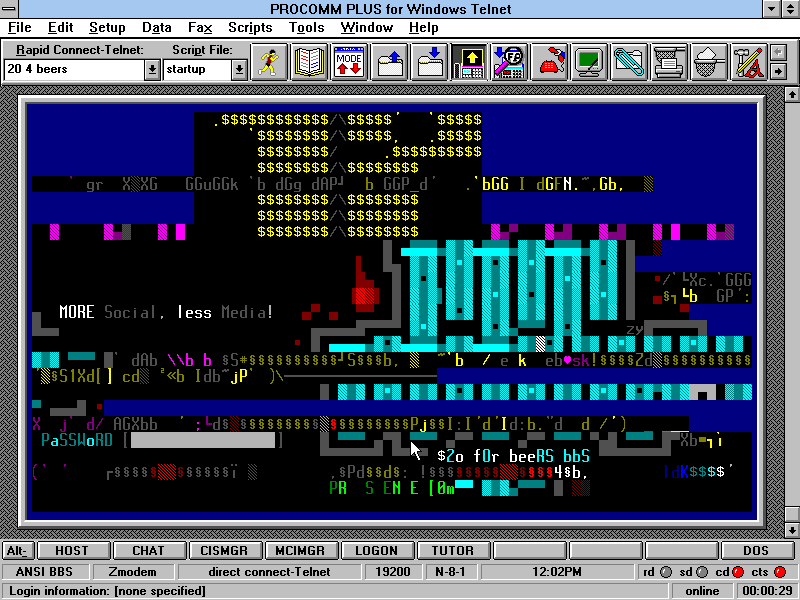First post, by James_Richards
- Rank
- Newbie
I Have MS-DOS working fine with internet, using mTCP and the telnet client bundled with it is great. However, in Windows the only telnet client I am finding seem to either only display the ANSI characters in black/white or they are in basic 4 colors and still just ansi characters and not graphic fidelity like the DOS client. I would use the mTCP client in a DOS window, but it requires all the connectivity info provided by mTCP and the DHCP executable provided with that. And until I figure out some way of having all of that be "aware" in windows 3.11, I have to reboot, edit an autoexec line and reboot again. Change sthe same line and reboot again just t o get back to Windows and the games/things I do there. I have tried CRT, SeraTerm, the telnet client in Windows, the telnet client provided by TCP=IP 32 and all are either not being setup by me correctly or just don't do what the DOS client does. Come to think of it, I am unable to even find a DOS telnet client as almost every web page I find has broken links or just doesn't exisat anymore (surprise, surprise). You'd also think the newer clients like (netrunner, msytic or qomodem, etc would have a Windows or DOS build as their advertising includes all the catch phrases for retro, classic or "oldnet"
...this could be fun...



